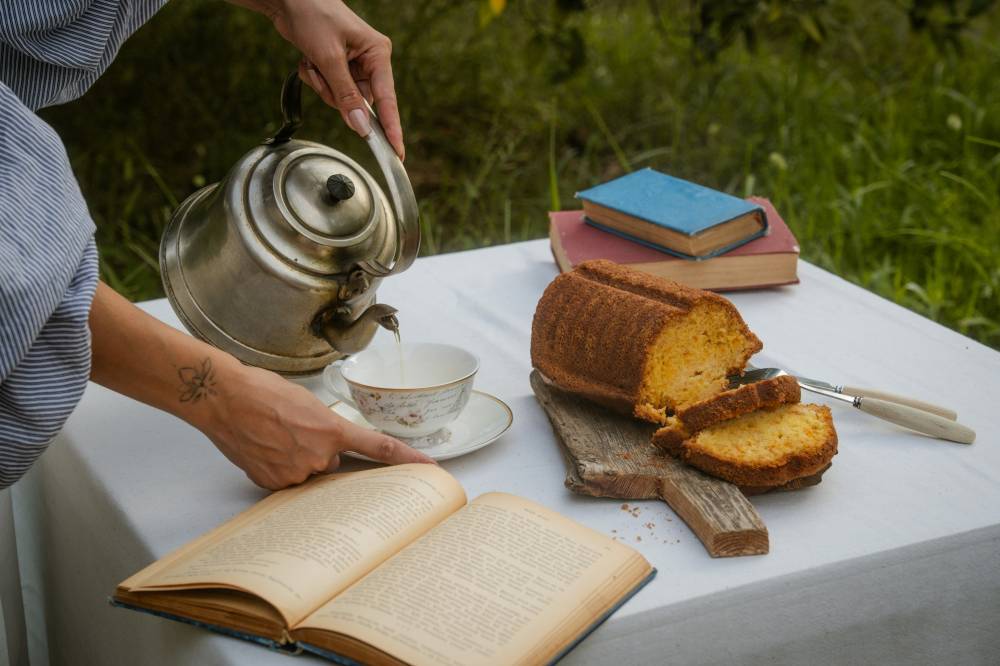The art of slowing down

There’s a kind of tired that doesn’t go away with sleep. It lingers under the surface—a heaviness behind the eyes, a tightness in the chest, and a sense that you’re always a little behind. Not because of one big thing, but because of the constant background hum of modern life: unread notifications, the ping of group chats, or even the quiet pressure to stay productive, responsive, and relevant.
The days feel stitched together with obligations. Even rest becomes something we try to manage to fit into a schedule, track with apps, and turn into content. The result is a strange kind of restlessness that never fully leaves the body, no matter how much we scroll, stream, or escape.
But slowing down doesn’t mean falling behind. It means choosing a different rhythm. One that makes space for breath, for stillness, for moments that don’t rush past. It’s not about checking out of life, but softening how we move through it. And it doesn’t require a mountain retreat or a drastic life change. It can begin with something small: brewing your coffee slowly instead of rushing out the door, giving your morning a few more quiet minutes, or taking a breath before replying to that message. A simple return to presence. A soft turn toward ease.
A home that feels like an exhale
Your home doesn’t have to be perfect to feel grounding, but it should offer you comfort. When the outside world moves too fast, the right environment becomes quiet support: a soft place to land, reflect, and reset.
Sensory cues are everything. They anchor you when your thoughts spiral. Natural light that spills softly across your kitchen floor in the morning. A candle you light before bed—not for decoration, but because the flicker helps you exhale. The gentle hush of a playlist that plays while you cook. These small details aren’t just decorative. They create feeling, offer relief, and quietly shift the atmosphere.
Even in small apartments or cluttered spaces, slowness can bloom in the corner of a room—a favorite chair by the window, or maybe a tiny tray of essentials by the bed. When you fill your space with cues that invite you back to yourself, your body responds. Breath deepens. Shoulders fall. You feel less like you’re surviving the day, and more like you’re inhabiting it.
Returning to the body
Slowing down isn’t just about rearranging your time—it’s about remembering that you have a body. In a culture that keeps us living in our heads, we forget that presence begins below the neck. That the body is where rest actually happens.
You don’t need a routine to begin. Just a breath. Inhale, hold, exhale. Let it be quiet. Let it be enough. Breath is the simplest tool we have, and the one we forget most often.
In stillness, the body begins to speak—through a quiet stretch after sitting too long, a hand resting over your heart, or the release of tension you didn’t realize you were holding in your jaw. Rest often begins with the smallest gestures: lying flat on the floor, palms open, breathing like you mean it, while letting your weight settle fully.
Even a warm bath can become a kind of repair—not for the luxury, but for the way it invites the body to soften. You notice how the heat quiets your thoughts, how stillness stretches out just a little longer before you reach for the towel. These are the moments that remind you: rest isn’t something you earn. It’s what everything else depends on.
Let the small things be enough
We often think of rest as something we need to plan for—a trip, a weekend away, a full day without responsibilities. But true rest often happens in the quiet, everyday moments that we usually overlook.
It’s in the short pause before the next task. It’s in simple routines that bring a sense of ease. Slowing down doesn’t have to be dramatic. Sometimes, sitting without distractions is enough. Sometimes, taking a breath and doing one thing at a time is enough. Rest isn’t about stopping everything. It’s about paying attention to what’s already here.
We live in a culture that treats rest like a prize. Something you get after you’ve worked hard enough, accomplished enough, proved yourself enough. But this idea keeps us stuck in cycles of burnout. We run ourselves dry, then wonder why the weekend isn’t enough to recover.
True rest isn’t something to earn. It’s something to practice. To integrate into daily life, not just save for vacations. And it can even be beautifully simple—eating dinner without a screen, letting yourself nap in the middle of the day, or even sitting in silence without feeling like you have to do anything with that time.
Rest doesn’t need to be justified. You don’t need to hit rock bottom to deserve a break. You can rest because your body asks for it. Because your spirit needs it. Because you want to feel human again—not like a machine, running on deadlines and caffeine.
Making space for what matters
Choosing to slow down in a world that rewards urgency is a quiet kind of strength. It doesn’t have to be loud or performative. You feel it in how you protect your weekends. In how you say no without overexplaining. In how you carve out time for rest, reflection, and joy that doesn’t need to be shared.
It’s like editing your life. Not stripping it bare, but being more deliberate about what stays. Slowing down isn’t about doing less for the sake of it. It’s about doing what feels meaningful—with the presence it deserves. It’s giving your attention to what actually matters.
And in time, the art of slowing down becomes something you live. In the way you end your day with a small ritual. In how you breathe when you finally sit still. In how you begin to treat your own time as something valuable, not just something to manage. Because the most beautiful parts of life often aren’t the loudest. They’re the ones that feel like a breath. A stretch. A moment that lands quietly and stays with you.

















